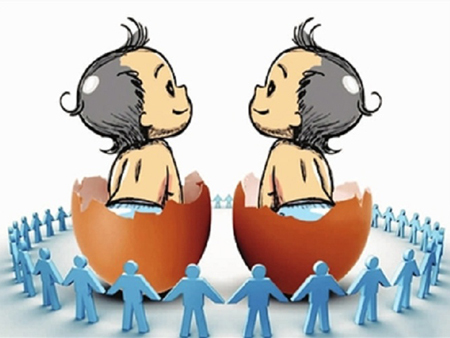When China relaxed its four-decade one-child policy at the start of 2016, there were a variety of predictions on whether the change in family planning rules would encourage enough people to have a second child.
当中国于2016年初结束其长达40年的独生子女政策之后,关于这一家庭计划生育政策的改变是否会鼓励更多的人生养第二个孩子的各种预测就甚嚣尘上。
Some said there would be too few to offset the effects of an aging population. Others predicted a baby boom because, after all, Chinese people love babies.
有些人表示这一改变很难抵消老龄化人口的影响,而其他一些人则预测会有一个婴儿潮的出现,因为毕竟中国人还是喜欢小孩儿的。

Now the numbers are in: In the first half of 2016, the proportion of Chinese newborns who were second children grew to 44.7 percent of total newborns.
现在的数字是:在2016年上半年,我国新生儿中的二孩比例增至44.7%。
That's an increase of some 6.7 percentage points over the proportion of second-child newborns for the whole of 2015.
这一数字与2015年全年相比,上升了约6.7个百分点。
A total of 8.31 million newborns were registered nationwide this year by the end of June, a 6.9% increase from the same period last year, according to the National Health and Family Planning Commission.
据国家卫生计生委表示,今年上半年,全国登记出生人口共831万人,同比增长6.9%。
Some regions are beginning to see second children comprising more than half of local newborns.
部分地区二孩已占到了当地出生人口的一半以上。
The universal two-child policy was adopted at the Fifth Plenary Session of the 18th Communist Party of China Central Committee in October 2015, and it began to be implemented nationwide in 2016.
2015年10月,党的十八届五中全会通过了全面二孩政策,该政策于2016年开始在全国实行。












